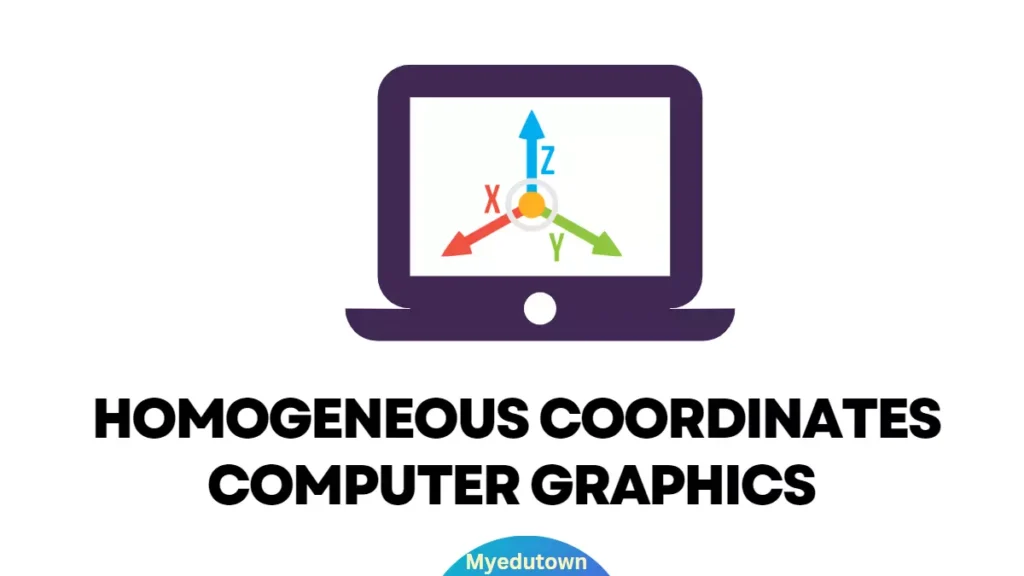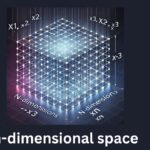Homogeneous coordinates are a way of representing points and vectors in an n-dimensional space using coordinates. In the context of computer graphics, homogeneous coordinates are fundamental to representing transformations, enabling a unified approach to 2D and 3D operations. Their use has contributed significantly to the development of modern computer graphics, enhancing both simplicity and versatility.
In this post, we will explore why homogeneous coordinates are used in computer graphics, their advantages, and how they relate to key concepts such as transformations, clipping, and interpolation.

Why Are Homogeneous Coordinates Used in Computer Graphics?
Homogeneous coordinates provide a powerful framework for performing complex transformations in computer graphics. By extending Cartesian coordinates, they allow transformations like translation, rotation, scaling, shearing, and perspective projection to be represented uniformly using matrices. This uniformity simplifies calculations, particularly for composite transformations, where multiple operations are combined into a single transformation matrix.
Advantages of Homogeneous Coordinates in Computer Graphics
8 Advantages of Homogeneous Coordinates in Computer Graphics: Explore their role in simplifying transformations, enhancing efficiency, and boosting graphics precision.
1. Simplicity
Homogeneous coordinates offer a unified way to represent points, vectors, and transformations. For example:
- To rotate a point around the origin in 2D, we simply multiply the point’s homogeneous coordinates by a rotation matrix.
- This eliminates the need for separate translation and rotation steps, as required in Cartesian coordinates.
2. Compactness
Using homogeneous coordinates reduces the arithmetic operations needed for transformations. Consider translation:
- In Cartesian coordinates, translating a point requires adding a vector to the point.
- With homogeneous coordinates, translation is performed using a single multiplication with a translation matrix. This compact representation improves the efficiency of graphics algorithms.
3. Robustness
Homogeneous coordinates are less prone to numerical errors in computations. For instance:
- When normalizing vectors, Cartesian coordinates can introduce rounding errors due to division by small values.
- Homogeneous coordinates mitigate this by leveraging the additional coordinate (typically the -coordinate) for division, enhancing stability.
4. Flexibility
Homogeneous coordinates support a wide range of transformations, including:
- 3D transformations in computer graphics, such as rotations, scaling, and perspective projections.
- Shearing in computer graphics, which is a non-uniform scaling transformation. This flexibility makes them invaluable in complex modeling and animation workflows.
5. Convenience for Composite Transformations
In many applications, multiple transformations are combined into a single homogeneous coordinates transformation matrix. For example:
- Rotations, translations, and scaling can be concatenated into a single matrix, reducing computational overhead and maintaining consistency. This is especially useful for animations and hierarchical modeling.
6. Clipping and Window-to-Viewport Transformations
Homogeneous coordinates facilitate efficient clipping algorithms, such as the Cohen-Sutherland line clipping algorithm. Points at infinity, represented by a coordinate, are handled seamlessly.
Additionally, transformations like the window-to-viewport transformation are easily expressed using homogeneous matrices, simplifying rendering pipelines.
7. Interpolation and Perspective Projection
Homogeneous coordinates enable perspective-correct interpolation, crucial for rendering 3D scenes. By maintaining consistency in depth and perspective, they ensure accurate representation of objects on the screen.
8. Compatibility
Most graphics libraries and APIs, such as OpenGL and DirectX, use homogeneous coordinates for internal calculations. This standardization simplifies integration and reduces the need for constant conversion between coordinate systems.
Types of Homogeneous Coordinates in Computer Graphics
Homogeneous coordinates can represent various entities:
- Points: With , representing finite points in space.
- Vectors: With , representing directions or points at infinity.
Understanding these types is key to leveraging homogeneous coordinates in different contexts, such as transformation pipelines or projection systems.
Importance of Computer Graphics
Applications in Computer Graphics
Homogeneous Coordinates Example: Translation
Using a translation matrix:
A point is translated by multiplying with :
This approach unifies translation with other linear transformations.
Composite Transformation in Computer Graphics
Multiple transformations, such as scaling followed by rotation and translation, can be combined into one matrix. This composite transformation is efficient and simplifies calculations.
Shearing in Computer Graphics
Shearing transformations distort objects along an axis. Homogeneous coordinates simplify these operations using matrix representations:
3D Transformation in Computer Graphics
In 3D, homogeneous coordinates extend the concept of 2D transformations, allowing for rotations about arbitrary axes, perspective projections, and more.
Homogeneous Coordinates in Linear Algebra
The foundation of homogeneous coordinates lies in linear algebra. Matrix operations such as multiplication, inversion, and transposition form the backbone of transformation computations. Understanding this mathematical framework is crucial for implementing graphics algorithms.
Learning More: Homogeneous Coordinates in Computer Graphics PDF and Examples
To explore further, numerous resources are available, including tutorials, PDFs, and practical examples. These materials delve into topics like the derivation of transformation matrices, advanced clipping algorithms, and real-world applications.
Homogeneous Coordinates by Iowa State University
Advantages of Computer Graphics
Conclusion
Homogeneous coordinates are indispensable in computer graphics, offering a unified and robust framework for representing points, vectors, and transformations. They simplify complex operations, enhance computational efficiency, and ensure compatibility across graphics systems. Whether you are working with 3D transformations, window-to-viewport transformations, or shearing, understanding homogeneous coordinates is essential for mastering modern graphics pipelines.
FAQs
Why are homogeneous coordinates used in computer graphics?
Homogeneous coordinates provide a unified framework for representing transformations, enabling translation, rotation, scaling, and perspective projections to be handled uniformly with matrices
What is the role of the -coordinate in homogeneous coordinates?
The -coordinate helps differentiate between points () and vectors () and supports perspective projections by introducing depth information.
How do homogeneous coordinates simplify composite transformations?
By using matrix multiplication, multiple transformations such as rotation, scaling, and translation can be combined into a single transformation matrix, reducing computational complexity.
What are some practical applications of homogeneous coordinates?
Applications include 3D transformations, shearing, window-to-viewport mapping, and efficient clipping algorithms like the Cohen-Sutherland line clipping algorithm.
Where can I find more examples of homogeneous coordinates in computer graphics?
Examples and resources can be found in tutorials, academic papers, and dedicated PDFs on topics such as transformation matrices, interpolation, and practical implementations in OpenGL and DirectX.




